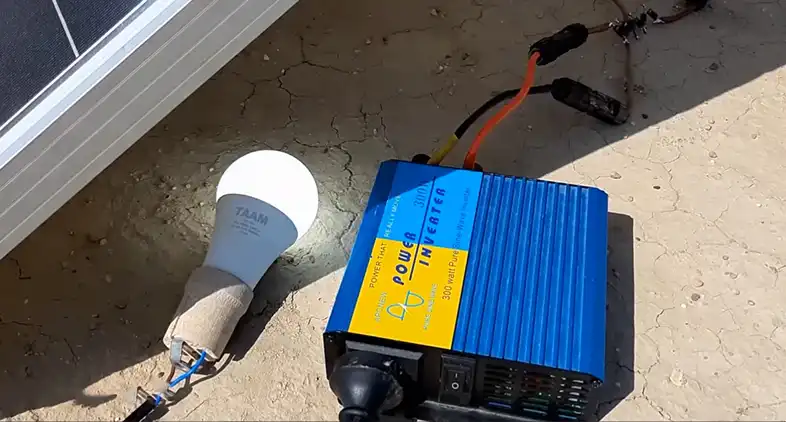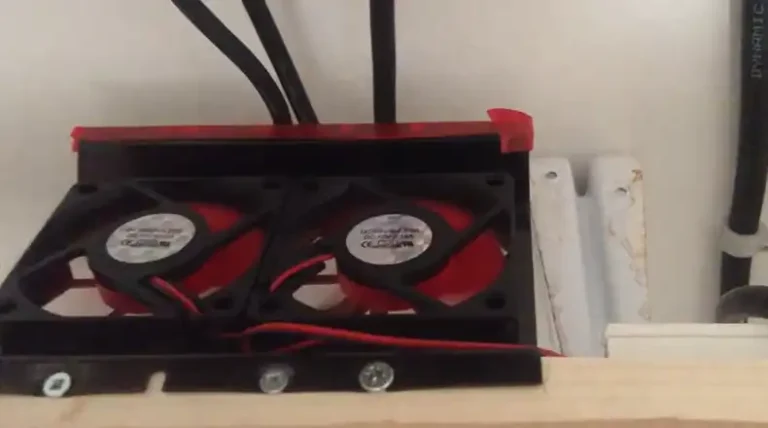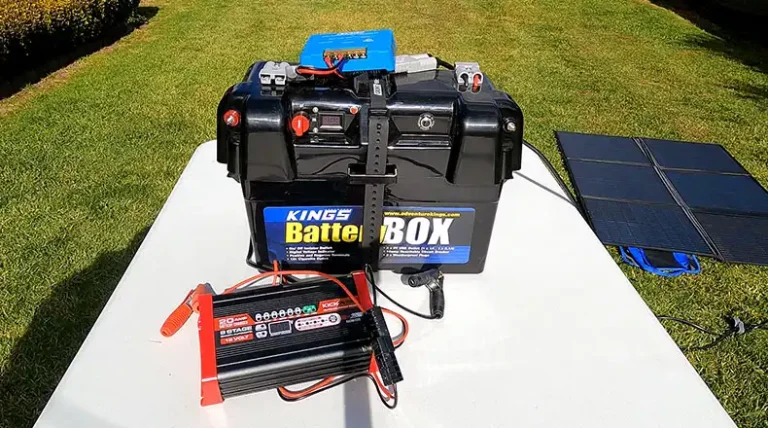Can I Use Solar Charge Controller Without Battery?
Installing solar panels in your home can provide clean, renewable energy and reduce your electricity bills. However, many homeowners wonder if they need batteries to store the energy or if they can use a solar charge controller to manage the system without batteries.
In short, the answer is yes, you can use a solar charge controller without batteries. The charge controller will regulate the voltage and current from the solar panels to prevent damage to any electronics or appliances that are connected. However, there are some disadvantages to not having battery storage.
To understand the full picture, I have explained how solar charge controllers work, the pros and cons of not using batteries, considerations for setup and usage, and some solar charge controller options to consider for a battery-less system in this article. Keep reading to learn the key factors in deciding if you can use solar without batteries!

What Does a Solar Charge Controller Do?
Before examining if you can go without batteries, it helps to understand what a solar charge controller does. Here are the key functions:
- Regulates voltage – The controller ensures the solar panels do not overcharge the batteries or electronic devices connected to the system. It converts higher voltages from the panels down to safer lower voltages.
- Regulates current flow – It acts like a valve to control how much current flows into the batteries or electronics. This prevents damage from overheating due to excessive current.
- Extends battery life – By preventing overcharging and over-discharging, the controller protects batteries from damage and extends their usable lifespan.
- Provides system data – Monitors the energy production, battery state of charge, and usage statistics. This data can be displayed onscreen or digitally transmitted.
- Safety features – Protects against issues like short circuits, reverse currents, lightning strikes, high temperatures, and more. Prevents fires or equipment failures.
So, the solar charge controller acts as the brain by managing and protecting the system. While batteries provide storage, the controller works flawlessly without them.
Is It Possible to Use Solar Charge Controller Without Batteries?
Yes, it is absolutely possible to use solar charge controllers without any batteries connected.
The key functions of the charge controller are to regulate voltage and current coming from the solar panels and prevent overcharging or damage to connected devices. It can perform these roles perfectly fine without batteries in the system.
Some examples of how a solar charge controller works without batteries:
- It converts higher voltage from panels down to safer 120V/240V for household appliances.
- It meters out current flow at safe levels for electronics like phones or TVs.
- It dumps any excess electricity not used immediately back to the utility grid.
- It monitors and displays system performance data.
While batteries provide energy storage, the solar charge controller is able to operate as a standalone protective device without batteries attached. It ensures the safe delivery of solar power directly to devices and grid integration. Read on to learn the consequences of not using a battery with a charge controller.
Consequences of Using Solar Charge Controller Without Batteries
While using a solar charge controller without batteries can reduce costs, there are some significant consequences to consider:
- Lack of backup power – This is the biggest consequence. Without battery storage, your solar system will shut down during any grid failure or outage. You will be left without power.
- Increased wear on appliances – By directly connecting appliances to solar panels without batteries as a buffer, voltage fluctuations can damage sensitive electronics and reduce their lifespan.
- Wasted solar energy – Any excess solar electricity generated during the day when appliances are not actively in use will simply be sent back to the grid rather than stored locally for later use.
- Need to shift usage – Without stored solar energy, you will need to plan to use most appliances and devices during sunny daytime hours. Washing machines or EV charging will need to happen mid-day.
- No off-grid capability – The system will only function when connected to the utility grid. You lose energy independence and resilience.
- Difficulty powering large loads – Battery banks help safely power high electricity draw appliances like air conditioners. The solar panels alone may not sustain large loads.
- Inverter overload – Cloudy weather can cause repeated on/off cycles that strain the inverter. Batteries help provide steady power.
Overall, the lack of energy storage makes the solar system dependent on the utility grid operating normally. Be sure to carefully weigh these consequences before choosing to go without batteries long-term.
Pros and Cons of Using a Solar Charge Controller Without Batteries
Removing batteries simplifies the solar system and reduces upfront costs. But there are some key disadvantages to weigh as well when going battery-less:
Pros:
- Lower upfront cost – No need to purchase expensive batteries, which can cost anywhere from $5,000 to $10,000.
- Easier installation & maintenance – Fewer components to install and maintain. No need to mount and wire batteries.
- Prevents overcharging – The controller still regulates voltage/current to protect electronics.
- sellable excess power – Excess power generated during the day can be sold back to the utility company.
Cons:
- No backup power – The system will not function during grid outages without battery storage.
- Limited energy savings – All excess solar energy is sent to the grid rather than stored locally for later use.
- Net metering required – The utility company must credit you for excess energy sold back, which is not available everywhere.
- Idle time wasted – Solar energy produced when appliances are not in use is wasted without batteries to store it.
- Nighttime solar power – Solar production drops off to zero after sunset without stored energy to draw from.
Overall, the biggest disadvantage is the lack of backup power and limited energy independence. But for some homeowners, the lower upfront cost may outweigh those factors.
Key Considerations for Using a Solar Charge Controller Without Batteries
While it is certainly possible to use solar without batteries, there are some special factors to consider:
- Net metering – Your utility company must support net metering to credit your excess solar generation. This policy is not available in all areas.
- Grid-tied inverter – The inverter must be designed for grid-tied systems to synchronize with the grid voltage and frequency.
- Solar array size – Size the system to match your daytime usage to minimize excess power sent to the grid.
- Load management – Use energy-intensive appliances during sunny hours to maximize solar utilization.
- Future expansion – Leave room to potentially add batteries down the road for backup power needs.
- Charge controller features – Look for MPPT tracking and power conversion to maximize solar harvesting.
With careful planning and setup, a solar system without batteries can successfully reduce your energy costs while preventing overcharging.
Top Solar Charge Controllers to Use Without Batteries
Here are some top-rated solar charge controllers suitable for battery-less systems:
1. Renogy Wanderer

- $30-$60 price range
- 30A, 40A, 60A versions available
- Compact and lightweight
- LCD display of data
- PWM charging
This affordable PWM controller is excellent for smaller systems up to 400W. Easy to install and durable for outdoor use.
2. Victron SmartSolar MPPT

- $150-$320 price range
- 100V / 15A to 100V / 100A models
- Advanced MPPT technology
- Bluetooth connectivity
- LCD display
Victron makes premium MPPT controllers for maximum solar harvesting and efficiency. Optional Bluetooth for monitoring.
3. Midnite Solar Classic SL

- $300-$500 price range
- 150V / 20A to 150V / 60A ratings
- Very durable and weatherproof
- Multiple LED indicators
- Easy-to-understand manual
Midnite Solar’s Classic SL is made in the USA with a rugged fully potted aluminum housing. Intuitive status LEDs and performance-focused.
Conclusion
Installing a solar charge controller without batteries allows you to reap the benefits of solar power at a lower upfront cost. While lack of energy storage limits backup capability, the controller alone can regulate your system to prevent damage and safety hazards. With smart planning for your usage needs and location limitations, a battery-less solar setup can be a viable starting point. Hopefully, this overview gave you a clear answer on whether you can use solar charge controllers without batteries. Please leave a comment below if you have any additional questions! Thanks for reading.
Frequently Asked Questions
Q: What are the main functions of a solar charge controller?
A: The main functions of a solar charge controller are to regulate voltage and current from the solar panels, prevent overcharging/discharging of batteries, provide system data and stats, and add safety protections for issues like short circuits or high temperatures.
Q: How does a solar charge controller protect the system without batteries?
A: Without batteries, the solar charge controller protects electronics and appliances by regulating the voltage and current coming from the solar panels. It converts higher voltages down to safer levels and prevents excess current that could cause overheating damage.
Q: What are some key disadvantages to using solar charge controllers without batteries?
A: Some key disadvantages are no backup power during grid failures, limited energy savings since excess power goes back to the grid, need for net metering from utility companies, and waste solar energy produced when not immediately used.
Q: What special considerations should be made when setting up a solar system without batteries?
A: Key considerations are having net metering with your utility, using a grid-tied inverter, sizing your solar array based on daytime usage, managing usage during sunny times, leaving room to add batteries later, and getting an MPPT charge controller.






![Best Solar Companies in San Jose | [2024 Guide]](https://www.itekenergy.com/wp-content/uploads/2024/03/Best-Solar-Companies-in-San-Jose-768x428.webp)